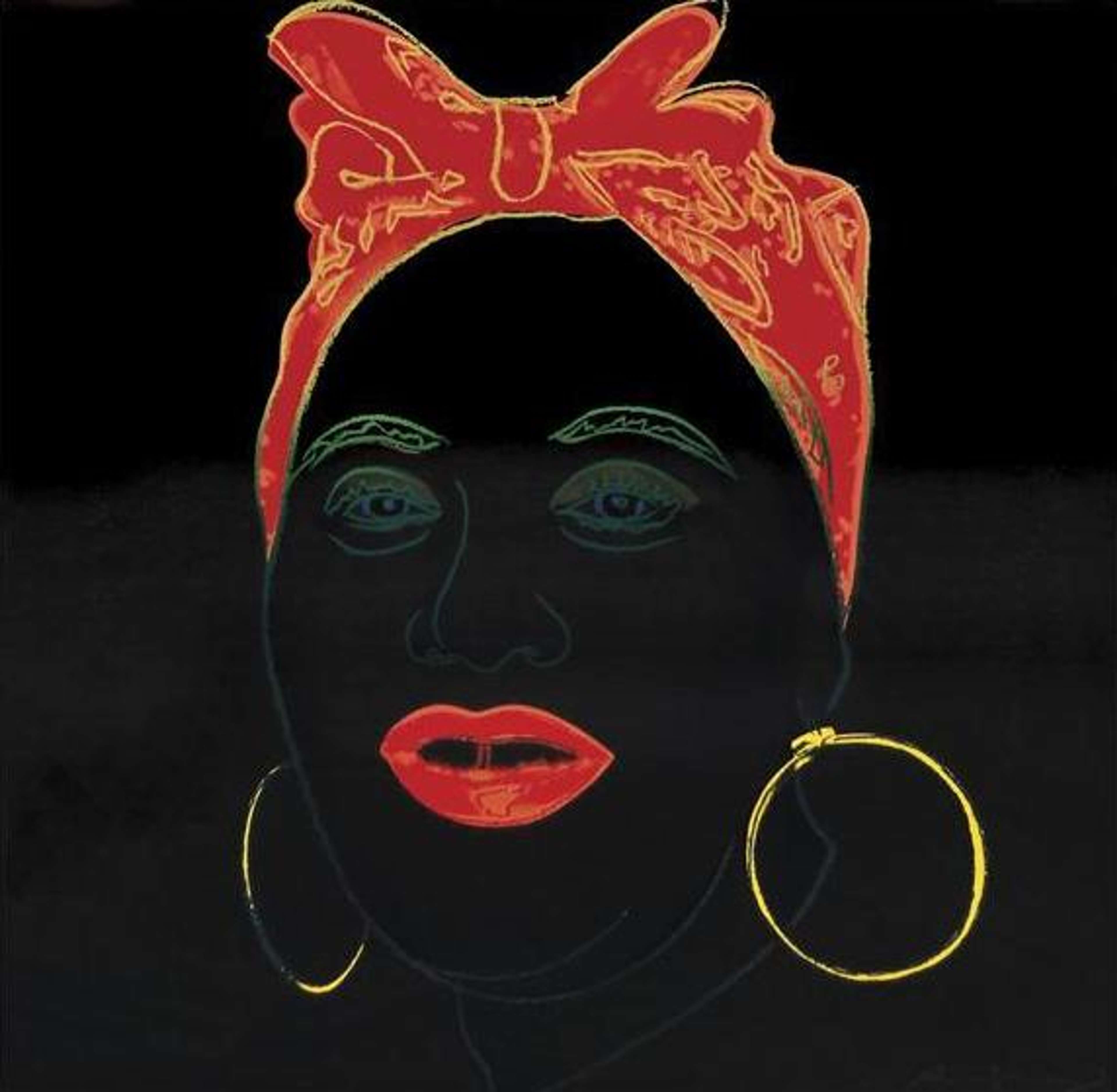 Myths Collection © Andy Warhol, 1981
Myths Collection © Andy Warhol, 1981
Interested in buying or selling
Andy Warhol?

Andy Warhol
487 works
Andy Warhol’s Myths portfolio depicts various American entertainment idols, reflective of his uncanny ability to mine contemporary culture for its icons. One of the artist’s most sought after portfolios, it depicts characters from TV, film and culture as powerful icons.
The Myths portfolio was published by gallerist Ronald Feldman.
 Superman (F. & S. II.260) © Andy Warhol, 1981
Superman (F. & S. II.260) © Andy Warhol, 1981Created in 1981, the Myths series consists of 10 screen prints and was originally published by the Ronald Feldman Gallery. The gallery had a particularly generative relationship with Warhol, publishing many prints including the Ads and Endangered Species portfolios.
This series is about America and popular culture.
 Mammy (F. & S. II.262) © Andy Warhol, 1981
Mammy (F. & S. II.262) © Andy Warhol, 1981This portfolio depicts icons of American TV and popular culture. Warhol once stated, “everybody has their own America, and then they have pieces of a fantasy America that they think is out there but they can’t see… you’ve pieced them together from scenes in movies and music and lines from books. And you live in your dream America that you’ve custom-made from art and schmaltz and emotions just as much as you live in your real one.”
The Myths series is said to depict Warhol’s own vision of America.
 The Star (F. & S. II.258) © Andy Warhol, 1981
The Star (F. & S. II.258) © Andy Warhol, 1981Depicting fictional figures from television, film and popular folklore, using rich colours and diamond dust, Warhol pays a nostalgic homage to the characters that featured heavily in both his childhood and a shared American cultural consciousness. In many ways, the Myths series can be viewed as a portrait of Warhol’s own personal America.
Many of Warhol’s subjects in this series date back to the early days of TV and film.
 Howdy Dowdy (F. & S. II.263) © Andy Warhol, 1981
Howdy Dowdy (F. & S. II.263) © Andy Warhol, 1981For example, Howdy Doody was a children’s television show that first aired in 1947, while The Star features Greta Garbo.
This is one of Warhol’s diamond dust series.
 Santa Claus © Andy Warhol, 1981
Santa Claus © Andy Warhol, 1981Andy Warhol was one of the first artists to use diamond dust in his screen prints, the earliest being his ‘Diamond Dust Shoes’ in 1980. Diamond dust adds an illusion of glamour to Warhol’s works, but in true Warholian style, this is mere illusion since the dust used is inexpensive and mass-produced.
These images are not appropriated from existing imagery like most of Warhol’s screen prints.
 Uncle Sam (F. & S. II.259) © Andy Warhol, 1981
Uncle Sam (F. & S. II.259) © Andy Warhol, 1981For many works in the series, including Dracula and Uncle Sam, the artist called upon actors and friends to recreate these archetypal characters. Warhol then took Polaroid photographs which became the source material for his screen prints. This elaborate process, involving makeup and costumes, resulted in dynamic images imbued with movement and vivid colour.
Warhol even included an image of himself in this series.
 The Shadow © Andy Warhol, 1981
The Shadow © Andy Warhol, 1981Warhol even included an image of himself as The Shadow, a crime-fighting hero from the 1930s radio show. The artist looks out from the picture plane as a shadowy, enigmatic figure.
The Myths portfolio is a perfect summary of Warhol’s practice.
 The Witch (F. & S. II.261) © Andy Warhol, 1981
The Witch (F. & S. II.261) © Andy Warhol, 1981The Myths portfolio succinctly exemplifies one of the central concepts underpinning Warhol’s practice: that of elevating everyday mass media imagery to the realm of fine art.
Mickey Mouse is the oldest icon depicted in the collection.
 Mickey Mouse (F. & S. II.265) © Andy Warhol, 1981
Mickey Mouse (F. & S. II.265) © Andy Warhol, 1981Many of the subjects for these prints are from 1950s television shows or Hollywood films, and Mickey Mouse is one of the oldest icons depicted in the collection, dating back to 1928 when the character was created by Walt Disney.
Warhol had a knack for spotting icons of contemporary culture.
 Ads Portfolio © Andy Warhol, 1985
Ads Portfolio © Andy Warhol, 1985The Myths collection captures Warhol’s ability to spot the most prominent icons and symbols of contemporary culture. Warhol is known for his Pop Art portraits of iconic film stars and singers such as Marilyn Monroe and Elvis Presley and later in 1985, the artist created another series of artworks inspired by symbols of popular culture, the Ads collection.
